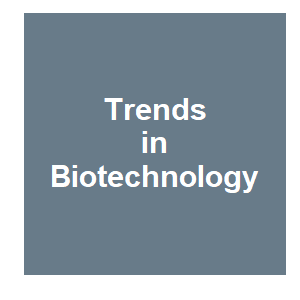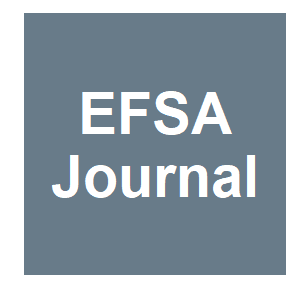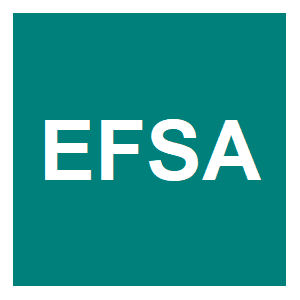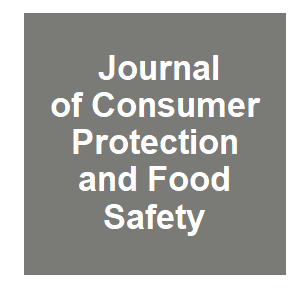
Keywords: problem formulation

|
Risk management recommendations for environmental releases of gene drive modified insectsY. Devos, J. D. Mumford, M. B. Bonsall, D. C. M. Glandorf and H. D. Quemada, Biotechnology Advances, 2021.
The ability to engineer gene drives (genetic elements that bias their own inheritance) has sparked enthusiasm and concerns. Engineered gene drives could potentially be used to address long-standing challenges in the control of insect disease vectors, agricultural pests and ... Keywords: Aedes aegypti, agriculture, dengue, environmental risk-assessment, Eradication, Food Science & Technology, gene drive guidance, gene drive safety, Genetic control, Genetic modification, insects, management, policy, population, problem formulation, regulation, risk assessment, transmission |

|
Potential use of gene drive modified insects against disease vectors, agricultural pests and invasive species poses new challenges for risk assessmentY. Devos, J. D. Mumford, M. B. Bonsall, A. M. Camargo, L. G. Firbank, D. C. M. Glandorf, F. Nogué, K. Paraskevopoulos and E. A. Wimmer, Critical Reviews in Biotechnology, 2021.
Potential future application of engineered gene drives (GDs), which bias their own inheritance and can spread genetic modifications in wild target populations, has sparked both enthusiasm and concern. Engineered GDs in insects could potentially be used to address long-standing ... Keywords: Aedes aegypti, agriculture, dengue, environmental risk-assessment, Eradication, Food Science & Technology, gene drive guidance, gene drive safety, Genetic control, Genetic modification, insects, management, policy, population, problem formulation, regulation, risk assessment, transmission |

|
Systematic identification of plausible pathways to potential harm via problem formulation for investigational releases of a population suppression gene drive to control the human malaria vector Anopheles gambiae in West AfricaJ. B. Connolly, J. D. Mumford, S. Fuchs, G. Turner, C. Beech, A. R. North and A. Burt, Malaria Journal, 20:170. 2021.
Population suppression gene drive has been proposed as a strategy for malaria vector control. A CRISPR-Cas9-based transgene homing at the doublesex locus (dsxFCRISPRh) has recently been shown to increase rapidly in frequency in, and suppress, caged laboratory populations of the ... Keywords: Aedes aegypti, agriculture, dengue, environmental risk-assessment, Eradication, Food Science & Technology, gene drive guidance, gene drive safety, Genetic control, Genetic modification, insects, management, policy, population, problem formulation, regulation, risk assessment, transmission |

|
Gene Drive-Modified Organisms: Developing Practical Risk Assessment GuidanceY. Devos, M. B. Bonsall, L. G. Firbank, J. Mumford, F. Nogué and E. A. Wimmer, Trends in Biotechnology, 2020.
Risk assessors, risk managers, developers, potential applicants, and other stakeholders at many levels discuss the need for new or further risk assessment guidance for deliberate environmental releases of gene drive-modified organisms. However, preparing useful and practical ... Keywords: Aedes aegypti, agriculture, dengue, environmental risk-assessment, Eradication, Food Science & Technology, gene drive guidance, gene drive safety, Genetic control, Genetic modification, insects, management, policy, population, problem formulation, regulation, risk assessment, transmission |

|
Further guidance required for assessment of gene drive technology, says EFSAN. Foote, Euractiv, 2020.
After being mandated by the European Commission, EFSA’s experts on genetically modified organisms (GMOs) published the scientific opinion related to engineered gene drives on Thursday (12 November), specifically focusing on gene drive modified disease-transmitting insects, ... Keywords: Aedes aegypti, agriculture, dengue, environmental risk-assessment, Eradication, Food Science & Technology, gene drive guidance, gene drive safety, Genetic control, Genetic modification, insects, management, policy, population, problem formulation, regulation, risk assessment, transmission |

|
Adequacy and sufficiency evaluation of existing EFSA guidelines for the molecular characterisation, environmental risk assessment and post-market environmental monitoring of genetically modified insects containing engineered gene drivesE. Panel o. G. M. Organisms, H. Naegeli, J.-L. Bresson, T. Dalmay, I. C. Dewhurst, M. M. Epstein, P. Guerche, J. Hejatko, F. J. Moreno, E. Mullins, F. Nogué, N. Rostoks, J. J. Sánchez Serrano, G. Savoini, E. Veromann, F. Veronesi, M. B. Bonsall, J. Mumfor, EFSA Journal, 18:e06297. 2020.
As a proactive measure, the European Food Safety Authority (EFSA) has been requested by the European Commission to review whether its previously published guidelines for the risk assessment of genetically modified animals (EFSA, 2012 and 2013), including insects (GMIs), are ... Keywords: Aedes aegypti, agriculture, dengue, environmental risk-assessment, Eradication, Food Science & Technology, gene drive guidance, gene drive safety, Genetic control, Genetic modification, insects, management, policy, population, problem formulation, regulation, risk assessment, transmission |

|
EFSA advises on risk assessment of engineered gene drivesEFSA, European Food and Safety Authority, 2020.
EFSA’s existing guidelines for the risk assessment of genetically modified animals are adequate for evaluating risks associated with gene drive modified insects. However, further guidance is needed for some areas, such as molecular characterisation, environmental risk ... Keywords: Aedes aegypti, agriculture, dengue, environmental risk-assessment, Eradication, Food Science & Technology, gene drive guidance, gene drive safety, Genetic control, Genetic modification, insects, management, policy, population, problem formulation, regulation, risk assessment, transmission |

|
The value of existing regulatory frameworks for the environmental risk assessment of agricultural pest control using gene driveJ. Romeis, J. Collatz, D. C. M. Glandorf and M. B. Bonsall, Environmental Science & Policy, 108:19-36. 2020.
The application of (synthetic) gene drives is a powerful tool to control populations of insects that are agricultural pests, vectors of diseases, or a threat to biodiversity potentially leading to the local or global eradication of a species. The potential use of gene drive ... Keywords: Aedes aegypti, agriculture, dengue, environmental risk-assessment, Eradication, Food Science & Technology, gene drive guidance, gene drive safety, Genetic control, Genetic modification, insects, management, policy, population, problem formulation, regulation, risk assessment, transmission |

|
Synthetic Biology: Research Needs for Assessing Environmental ImpactsC. M. Warner, S. R. Carter, R. F. Lance, F. H. Crocker, H. N. Meeks, B. L. Adams, M. L. Magnuson, T. Rycroft, K. Pokrzywinski and E. J. Perkins, Synthetic Biology 2020: Frontiers in Risk Analysis and Governance, 2019.
Synthetic biology and its applications have the potential to greatly improve economic development, public health, environmental stewardship, technological advancement, and many other areas. In May 2017, sixty individuals gathered in Lexington, Massachusetts for a workshop ... Keywords: Aedes aegypti, agriculture, dengue, environmental risk-assessment, Eradication, Food Science & Technology, gene drive guidance, gene drive safety, Genetic control, Genetic modification, insects, management, policy, population, problem formulation, regulation, risk assessment, transmission |

|
Regulatory experience and challenges for the release of GM insectsBeech, C, Journal Fur Verbraucherschutz Und Lebensmittelsicherheit-Journal of Consumer Protection and Food Safety, 9:S71-S76. 2014.
Genetically modified (GM) insects are a potentially valuable new tool for the biological control of insect pests of humans, animals and plants. Considerable progress has been made recently in transfer of GM insects from the laboratory to release and evaluation in the environment. ... Keywords: Aedes aegypti, agriculture, dengue, environmental risk-assessment, Eradication, Food Science & Technology, gene drive guidance, gene drive safety, Genetic control, Genetic modification, insects, management, policy, population, problem formulation, regulation, risk assessment, transmission |

Contact
David O’Brochta
Foundation for the
National Institutes of Health
geneconvenevi@fnih.org
RSS

